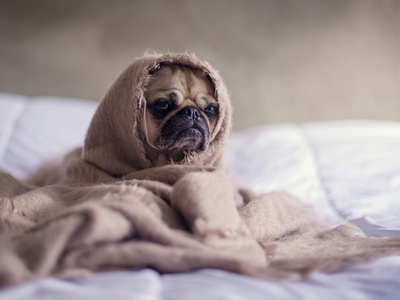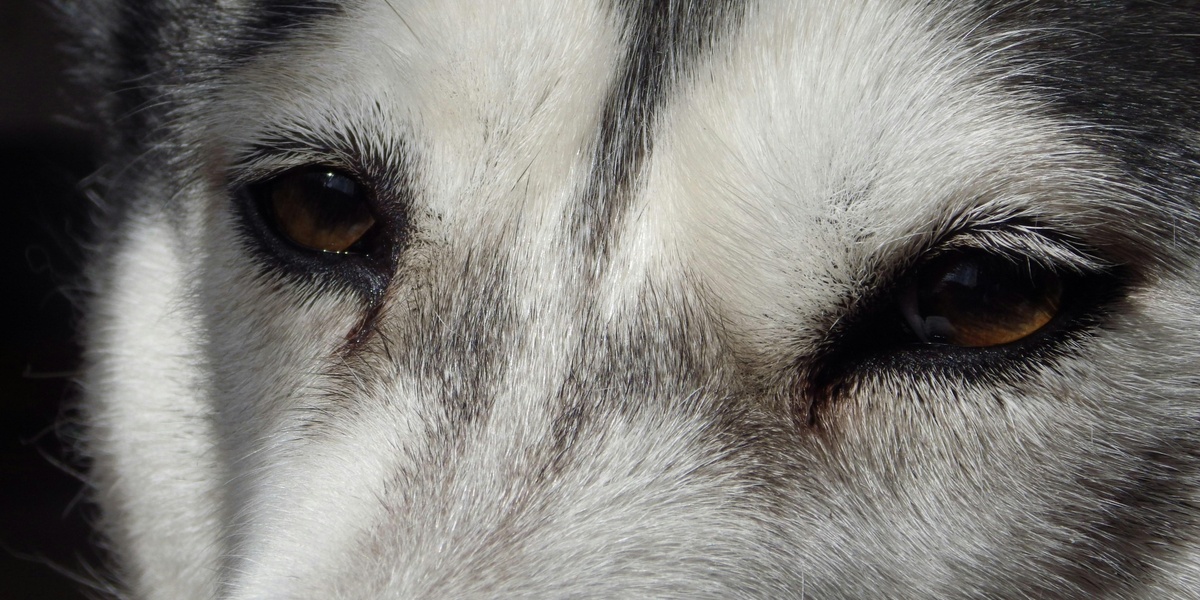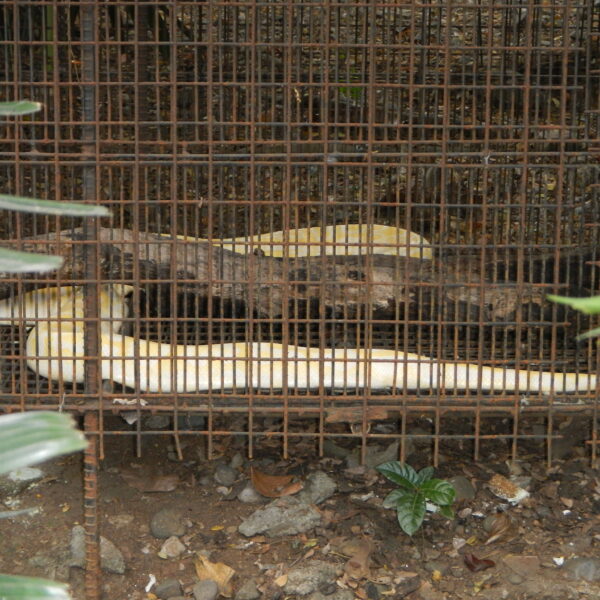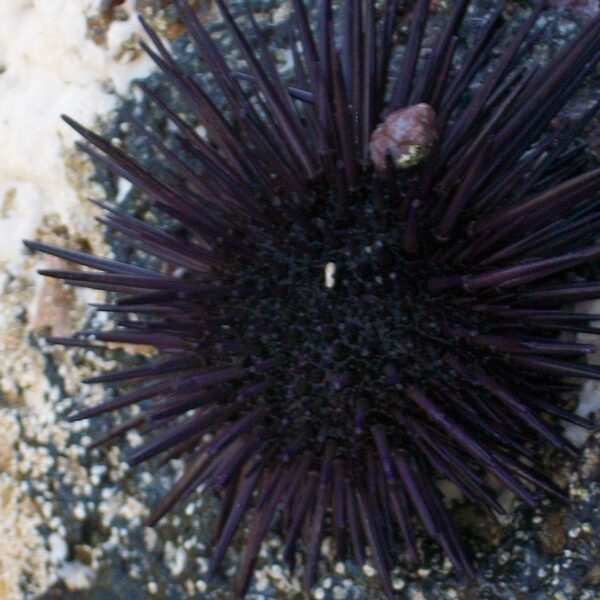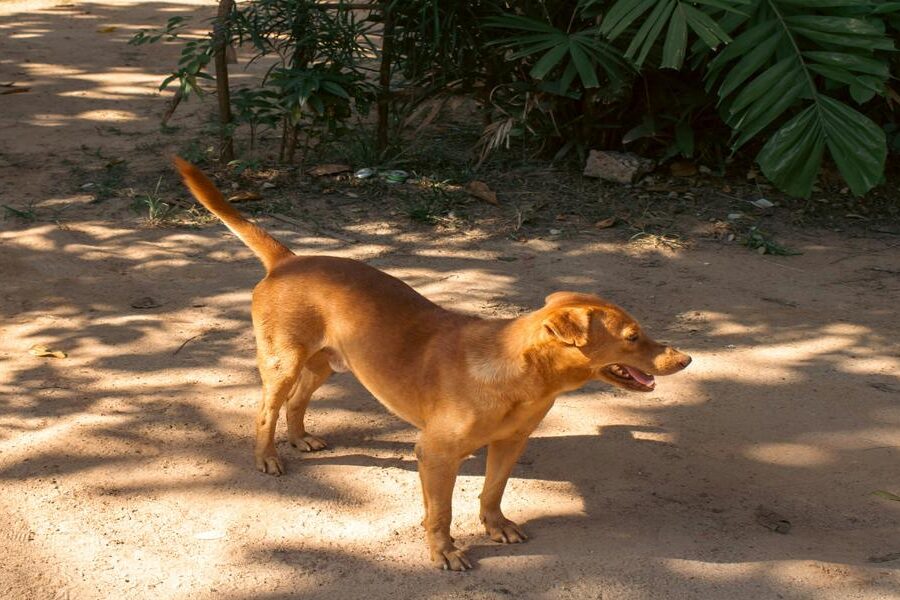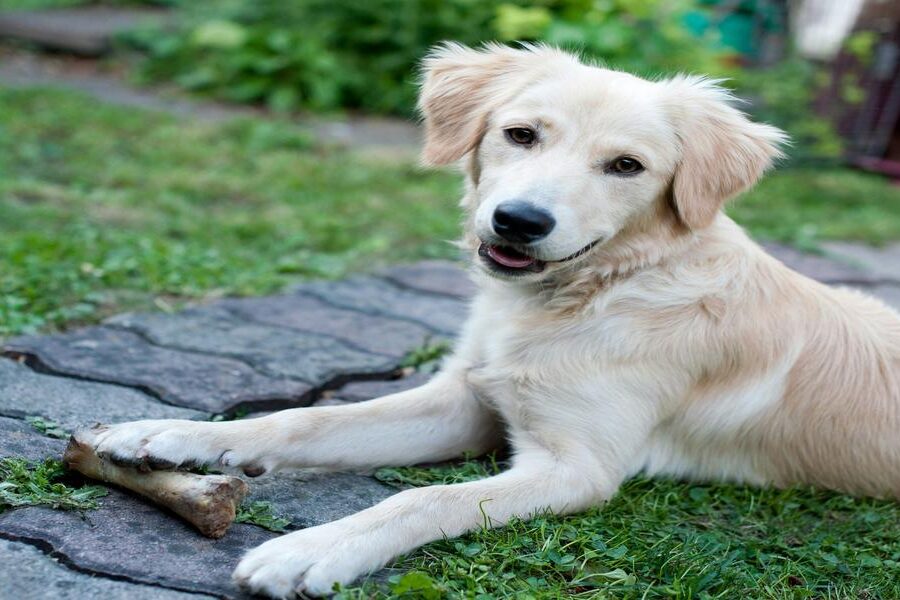This list contains 58 dog breeds that typically have dark eyes and follows kennel standards such as the AKC, FCI, and leading breed clubs. Dark-eyed means well-pigmented brown or dark brown eyes rather than blue, amber, or mismatched eyes. Most entries come from Europe and Asia and include many gundogs, mastiffs, spitz, and sighthounds. Columns show the breed name, scientific name (Canis lupus familiaris), typical eye color, and origin (region/country).
Below is the complete list with columns: Breed name, Scientific name, Typical eye color, and Origin (region/country).
Do puppies’ eye colors change as they grow?
Yes. Puppies often have bluish or gray eyes at birth. Pigment builds up over weeks and months. Most dogs show adult eye color by 8–16 weeks. Breed standards (AKC, FCI) judge adult eye color for conformation. Genetic factors like merle or dilute genes can cause lighter or blue eyes in adults. See a vet if an eye stays cloudy, red, or looks painful.
Does dark eye color affect a dog’s health or vision?
No. Dark eyes themselves do not change sight or cause health problems. Eye color comes from melanin pigment. Some color-related genes (merle, extreme white) can link to eye or ear issues. Choose breeders who follow health testing and breed-club guidance. Consult your veterinarian for any signs of eye disease or sudden vision change.
Dark Eyed Dog Breeds
| Breed | Scientific name | Typical eye color | Origin (region/country) | Description |
|---|---|---|---|---|
| Labrador Retriever | Canis lupus familiaris | dark brown | Canada/United Kingdom | Medium–large gundog with an “otter” tail and weatherproof coat. Famous for friendliness and trainability. AKC calls for brown eyes; darker preferred. Yellows can show slightly lighter hazel, but dark eyes remain the typical look in adults. |
| Golden Retriever | Canis lupus familiaris | dark brown | Scotland | Medium–large, feathered coat, soft expression, and eager-to-please temperament. AKC/FCI standards prefer dark brown, well-pigmented eyes that give a gentle look. Very occasional lighter shades appear, but dark eyes are standard for mature dogs. |
| German Shepherd Dog | Canis lupus familiaris | dark brown | Germany | Large, athletic herding dog known for intelligence and versatility. Breed standards prefer dark brown, almond-shaped eyes for a confident, keen expression. Some individuals show lighter brown, but dark eyes are typical and preferred for the classic look. |
| Rottweiler | Canis lupus familiaris | dark brown | Germany | Robust, medium–large guardian with a short black-and-tan coat and calm confidence. AKC/FCI specify medium to dark brown eyes; lighter or yellow eyes are undesirable. Expect dark eyes in well-bred dogs, though intensity can vary slightly with individuals. |
| Doberman Pinscher | Canis lupus familiaris | dark brown | Germany | Sleek, medium–large protection dog, alert and loyal. Breed standards call for eyes in shades of brown; darker eyes preferred for a dignified expression. Dilute coat colors can bring slightly lighter hues, but dark eyes are the norm. |
| Boxer | Canis lupus familiaris | dark brown | Germany | Muscular, medium-sized companion, playful and people-oriented. AKC requires dark brown eyes to maintain the characteristic soft, alert expression; blue or very light eyes are a fault. Most adults present distinctly dark eyes across coat colors. |
| Poodle | Canis lupus familiaris | dark brown | Germany/France | Highly intelligent, hypoallergenic-coated companion in three sizes. Breed standards prefer very dark, oval eyes conveying an alert, eager expression. Cafe-au-lait and silver may show marginally lighter tones, but typical adult Poodles have notably dark eyes. |
| French Bulldog | Canis lupus familiaris | dark brown | France | Compact, bat-eared charmer with a clownish personality. Standards favor dark, round eyes set wide apart; lighter tones can appear in diluted colors but aren’t typical. Expect dark eyes in most adults, enhancing their famously expressive face. |
| Bulldog | Canis lupus familiaris | dark brown | England | Stocky, affectionate companion with a wrinkled face and distinctive underbite. AKC calls for very dark eyes, set low and wide; light eyes detract from breed type. Most Bulldogs display dark brown eyes, occasionally shading slightly with coat color. |
| Beagle | Canis lupus familiaris | brown to dark brown | England | Merry, medium-small scenthound with long ears and big personality. Breed standards describe brown to dark brown eyes for a soft, pleading expression; hazel appears in some lighter coat shades but dark brown remains common in mature dogs. |
| Dachshund | Canis lupus familiaris | dark brown | Germany | Long-bodied, confident hound in smooth, long, or wire coats. Standards call for dark brown, oval eyes; dapple/merle dogs can carry one lighter or blue eye, but that’s not typical. Most adult Dachshunds, especially solids, show distinctly dark eyes. |
| Great Dane | Canis lupus familiaris | dark brown | Germany | Giant, elegant guardian with a gentle temperament. Most color varieties require dark brown eyes; in harlequin/mantle, standards allow lighter shades, and blue can occur. Still, dark eyes are typical across non-merle colors and preferred for expression. |
| Mastiff | Canis lupus familiaris | dark brown | England | Giant, massive guardian with a calm, dignified nature. Breed standards prefer medium to dark brown eyes; light eyes are undesirable. Expect dark eyes that complement the heavy head and black mask, though subtle shade differences can occur. |
| Bullmastiff | Canis lupus familiaris | dark brown | England | Powerfully built yet steady family guardian. Standards require medium to dark brown eyes; lighter hues are faults. Adults typically show rich, dark eyes that match their black mask, reinforcing the breed’s alert but trustworthy expression. |
| Cane Corso | Canis lupus familiaris | dark brown | Italy | Athletic, large Italian mastiff with a protective, loyal temperament. Standards prefer dark brown eyes; lighter eyes can appear particularly in gray coats but are not ideal. Most mature Corsos present distinctly dark eyes with strong facial pigment. |
| Bernese Mountain Dog | Canis lupus familiaris | dark brown | Switzerland | Large, tri-colored Swiss farm dog, gentle and affectionate. AKC/FCI call for dark brown, slightly oval eyes; light eyes are undesirable. Most Berners display notably dark eyes that soften their expression, though minor variation exists between lines. |
| Saint Bernard | Canis lupus familiaris | dark brown | Switzerland | Giant alpine rescuer, calm and devoted. Breed standards favor dark brown eyes; slightly lighter browns occur but aren’t typical. Proper eye shape and pigment maintain the classic kind expression owners expect in well-bred adults. |
| Newfoundland | Canis lupus familiaris | dark brown | Canada | Giant, water-loving working dog, famously sweet-natured. Standards require dark brown eyes; lighter browns may appear in some landseers. Most Newfs have rich, dark eyes that emphasize their gentle demeanor and hallmark “nanny dog” reputation. |
| Great Pyrenees | Canis lupus familiaris | dark brown | France/Spain | Majestic, large livestock guardian with a calm, independent streak. Standards call for dark brown eyes; light or staring eyes are penalized. Adults typically show deeply pigmented, dark eyes that contrast their white coats. |
| Akita | Canis lupus familiaris | dark brown | Japan | Large, powerful spitz guardian with a dignified, loyal temperament. Standards specify dark brown, triangular, deeply set eyes; lighter shades detract from correct expression. Most Akitas present notably dark eyes in adulthood. |
| Shiba Inu | Canis lupus familiaris | dark brown | Japan | Compact spitz with a foxlike face and spirited independence. Breed standards prefer dark brown, triangular eyes for a keen look. Occasionally, very slight lightening occurs in certain coats, but dark eyes remain typical in mature dogs. |
| Chow Chow | Canis lupus familiaris | dark brown | China | Lion-like spitz with a blue-black tongue and aloof dignity. Standards call for dark brown, deep-set eyes; light eyes are undesirable. Adults typically show strong pigment and dark eyes, enhancing their serious, scowling expression. |
| Chinese Shar-Pei | Canis lupus familiaris | dark brown | China | Medium-sized wrinkled dog with a devoted, reserved demeanor. Breed standards prefer very dark eyes; lighter amber may occur in dilute coats but isn’t typical. Expect dark eyes and heavy pigment in most Shar-Pei, especially non-dilutes. |
| Alaskan Malamute | Canis lupus familiaris | brown | United States | Large, powerful sled dog bred for endurance. Standards specify brown eyes; darker is preferred, and blue is a disqualification (AKC). Adults overwhelmingly have brown eyes, supporting a warm, wolfish expression distinct from blue-eyed Husky cousins. |
| Samoyed | Canis lupus familiaris | dark brown | Siberia | Smiling, medium-large spitz with a sparkling white coat and affectionate nature. Standards require dark eyes; blue is disqualifying (AKC). Most adults show dark almond eyes that create the characteristic “Sammy smile.” |
| Norwegian Elkhound | Canis lupus familiaris | dark brown | Norway | Hardy, medium spitz hound with a gray coat and curled tail. Standards call for dark brown eyes that are not protruding; light eyes are faulty. Adults generally present dark eyes that match their keen hunting expression. |
| Keeshond | Canis lupus familiaris | dark brown | Netherlands | Medium, silver-and-black spitz with spectacles markings and a friendly disposition. Standards require dark brown eyes; lighter tones would spoil the characteristic expression. Expect uniformly dark eyes in well-bred adult dogs. |
| Basenji | Canis lupus familiaris | dark brown | Central Africa | Elegant, lightly built sighthound that yodels instead of barking. Standards favor dark, almond-shaped eyes; lighter shades occur but are not preferred. Adults typically present rich, dark eyes that contribute to the breed’s quizzical, wrinkled forehead look. |
| Rhodesian Ridgeback | Canis lupus familiaris | dark brown | Southern Africa | Athletic, medium–large hound with a trademark ridge. Standards match eye shade to nose: black nose usually dark brown eyes; liver nose often amber. Dark eyes are common, but liver-nosed dogs may show amber—still within standard. |
| Greyhound | Canis lupus familiaris | dark brown | England | Sleek, large sighthound built for speed and calm companionship. Standards call for dark eyes enhancing a gentle, intelligent expression. Some individuals show medium brown, but dark brown is typical in mature dogs across most coat colors. |
| Whippet | Canis lupus familiaris | dark brown | England | Medium sighthound, affectionate and athletic. Standards prefer large, dark eyes; very light or staring eyes are undesirable. Adults predominantly present dark brown eyes that soften their sweet, biddable expression at home. |
| Saluki | Canis lupus familiaris | dark brown to hazel | Middle East | Graceful, feathered-eared sighthound with a gentle, sensitive nature. Standards allow dark to hazel eyes; dark brown is common. Expect slight variation across colors, but mature dogs typically show well-pigmented, expressive eyes. |
| Irish Wolfhound | Canis lupus familiaris | dark brown | Ireland | Giant, rough-coated sighthound known for a kind, dignified temperament. Standards prefer dark eyes; yellow or light eyes are faults. Adults usually present dark brown eyes that complete the calm, soulful expression fans adore. |
| Scottish Deerhound | Canis lupus familiaris | dark brown | Scotland | Tall, rough-coated sighthound with a gentle, dignified demeanor. Standards prefer dark brown eyes; lighter browns occur but aren’t ideal. Most adults have distinctly dark eyes complementing their wiry coat and soft expression. |
| Dalmatian | Canis lupus familiaris | brown to dark brown | Croatia | Athletic spotted companion with a cheerful outlook. Breed standards favor brown eyes; blue or mismatched eyes are discouraged or disqualifying depending on registry. Most adults display brown to dark brown eyes that fit the classic expression. |
| German Shorthaired Pointer | Canis lupus familiaris | medium to dark brown | Germany | Versatile, medium–large gundog, energetic and trainable. Standards prefer dark brown eyes; yellow is undesirable. Adults typically show medium to dark brown eyes across liver or liver-and-white coats. |
| German Wirehaired Pointer | Canis lupus familiaris | dark brown | Germany | Rugged, bearded hunting dog with a weatherproof coat. Breed standards call for dark brown eyes; light eyes are faults. Mature dogs generally present dark eyes that reinforce their keen, intelligent look in the field and at home. |
| Pointer | Canis lupus familiaris | dark brown | England | Elegant, athletic gundog with a noble head and graceful lines. Standards require dark eyes; lighter shades detract from expression. Adults commonly show deep brown eyes that harmonize with their sleek, short coat. |
| Flat-Coated Retriever | Canis lupus familiaris | dark brown | England | Cheerful, medium–large retriever with a glossy black or liver coat. Standards call for dark brown eyes; yellow or piercing eyes are faults. Expect a warm, dark-eyed expression in mature dogs across both accepted colors. |
| Curly-Coated Retriever | Canis lupus familiaris | dark brown | England | Distinctive tight curls on a tall, athletic retriever. Standards prefer dark brown eyes; lighter shades can appear in liver but aren’t ideal. Most adults show dark eyes that contribute to the breed’s confident, friendly expression. |
| English Springer Spaniel | Canis lupus familiaris | dark brown | England | Medium gundog, eager and biddable, with a merry tail. Standards favor dark brown eyes; light eyes are faulty. Liver/white dogs may show slightly lighter brown, but dark eyes remain typical and preferred. |
| English Cocker Spaniel | Canis lupus familiaris | dark brown | England | Compact, merry gundog with flowing ears. Standards require dark brown eyes; very light or yellow eyes are faults. Liver-roan dogs can trend a bit lighter, but the typical adult expression is distinctly dark-eyed and soft. |
| American Cocker Spaniel | Canis lupus familiaris | dark brown | United States | Smallest sporting spaniel with a cheerful, affectionate nature. Standards call for dark brown eyes; very light or blue are penalized. Merle lines can show atypical eye colors, but typical, well-bred Cockers have rich, dark eyes. |
| English Setter | Canis lupus familiaris | dark brown | England | Elegant, feathered gundog with a sweet, friendly temperament. Standards prefer dark brown eyes; light eyes spoil expression. Most adults present well-pigmented dark eyes across the Belton color patterns. |
| Gordon Setter | Canis lupus familiaris | dark brown | Scotland | Substantial black-and-tan setter with endurance and loyalty. Breed standards require dark brown eyes; light or yellow is undesirable. Expect a rich, dark-eyed expression typical of mature dogs in correct color and pigment. |
| Irish Setter | Canis lupus familiaris | dark brown to hazel | Ireland | Glamorous red-coated gundog, lively and affectionate. Standards allow dark brown to hazel; darker is generally preferred. Many adults show dark brown eyes, though some lines lean hazel—still within standard. |
| Belgian Malinois | Canis lupus familiaris | dark brown | Belgium | Agile, medium herder prized for drive and trainability. Standards prefer dark brown eyes; yellow or light eyes are faults. Most adults have dark eyes that enhance the intense, alert expression Malinois are known for. |
| Belgian Sheepdog | Canis lupus familiaris | dark brown | Belgium | Black-coated, elegant herder (Groenendael) with keen intelligence. Standards call for dark brown eyes; light eyes detract from expression. Adults characteristically present dark, almond eyes that match their rich pigment. |
| Standard Schnauzer | Canis lupus familiaris | dark brown | Germany | Medium, bearded multipurpose dog, spirited and smart. Breed standards require dark brown eyes; light eyes are undesirable. Most adults show dark, oval eyes that enhance the classic keen, whiskered expression. |
| Giant Schnauzer | Canis lupus familiaris | dark brown | Germany | Powerful, large working schnauzer with a commanding presence. Standards call for dark brown eyes; light eyes are faulty. Expect strongly pigmented, dark eyes in mature dogs, complementing black or pepper-and-salt coats. |
| Miniature Schnauzer | Canis lupus familiaris | dark brown | Germany | Small but sturdy terrier-type companion, lively and trainable. Standards prefer dark brown eyes; light eyes spoil expression. Most adults have distinctly dark eyes across color varieties, including salt-and-pepper, black, and black-and-silver. |
| American Staffordshire Terrier | Canis lupus familiaris | dark brown | United States | Muscular, affectionate companion with steady temperament. Standards favor dark, round eyes; very light or pink rims are undesirable. Adults typically show dark brown eyes that balance a broad head and strong cheek muscles. |
| Staffordshire Bull Terrier | Canis lupus familiaris | dark brown | England | Compact, athletic “Staffy,” famously people-oriented. Breed standards prefer dark brown eyes; lighter shades may appear in some coat colors but aren’t ideal. Mature dogs commonly present rich, dark eyes that fit the breed’s warm expression. |
| Border Terrier | Canis lupus familiaris | dark brown | United Kingdom | Hardy, small terrier with an otter-like head and a friendly, game attitude. Standards require dark eyes; light or prominent eyes are faults. Most adults have notably dark brown eyes that enhance the keen, kind expression. |
| Cairn Terrier | Canis lupus familiaris | dark brown | Scotland | Small, shaggy earthdog with a bold, cheerful spirit. Standards call for dark brown eyes; light eyes detract. Expect compact adults with bright, dark eyes peeking beneath brows, regardless of typical coat shades. |
| West Highland White Terrier | Canis lupus familiaris | dark brown | Scotland | Small, sturdy white terrier, confident and affectionate. Standards require dark brown, wide-set eyes for a lively expression. Very rarely a lighter brown appears, but dark is the norm in mature Westies. |
| Boston Terrier | Canis lupus familiaris | dark brown | United States | Compact, tuxedo-coated companion with a friendly, lively temperament. Standards favor large, dark round eyes; very light eyes are undesirable. Most adults display dark eyes that suit the breed’s expressive, people-focused nature. |
| Pug | Canis lupus familiaris | dark brown | China | Small, charming companion with a wrinkled face and curly tail. Standards call for large, dark eyes; light or protruding eyes are faults. Mature Pugs typically show very dark brown eyes that emphasize their comic, loving expression. |
Images and Details

Labrador Retriever
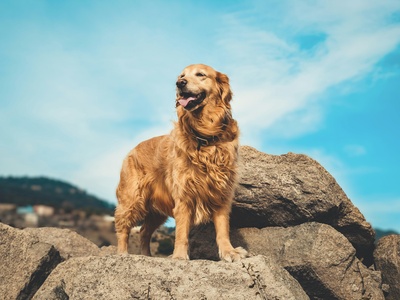
Golden Retriever
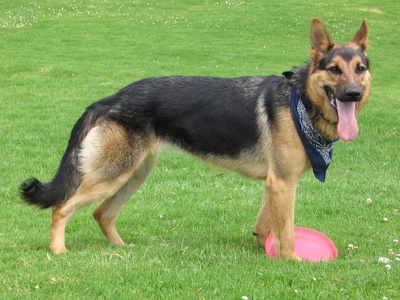
German Shepherd Dog

Rottweiler
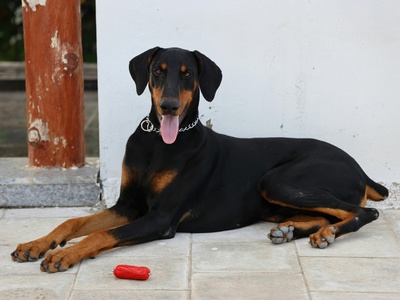
Doberman Pinscher
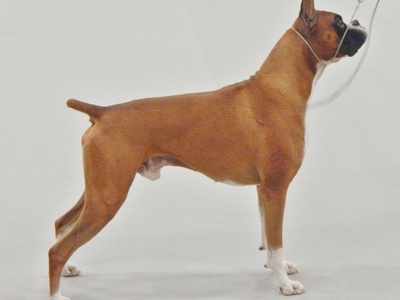
Boxer
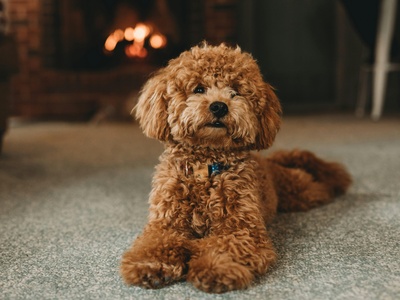
Poodle
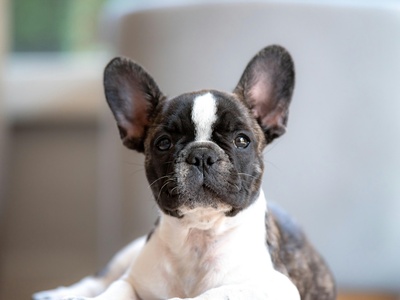
French Bulldog

Bulldog
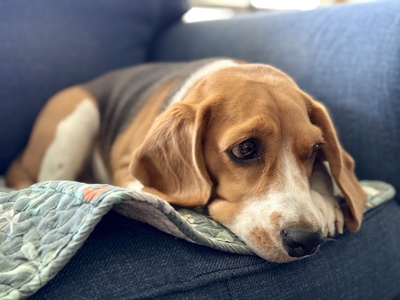
Beagle
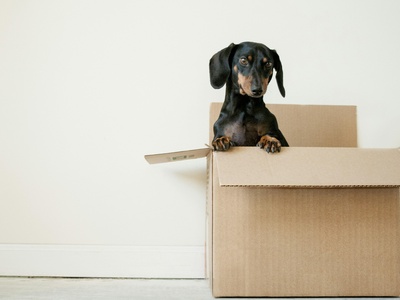
Dachshund

Great Dane
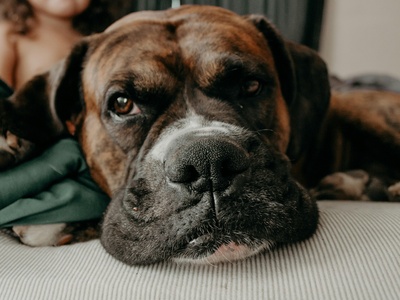
Mastiff

Bullmastiff
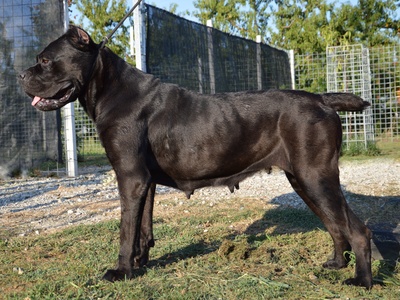
Cane Corso

Bernese Mountain Dog
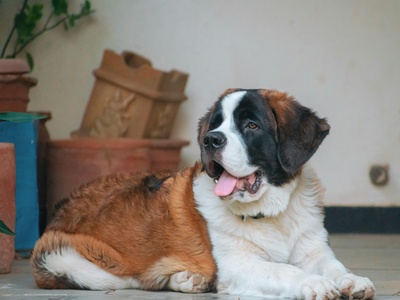
Saint Bernard
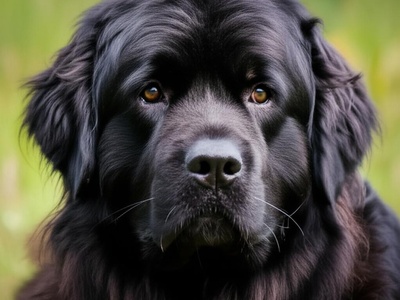
Newfoundland
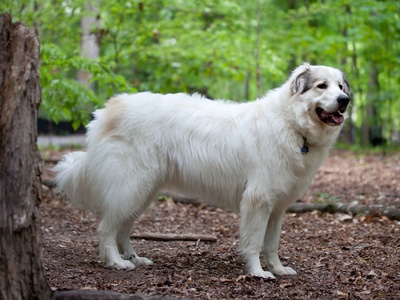
Great Pyrenees

Akita
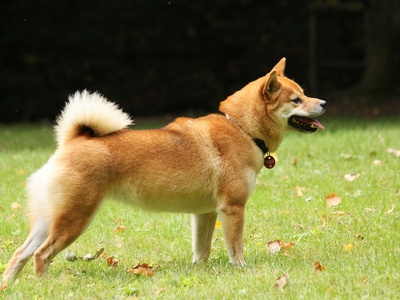
Shiba Inu
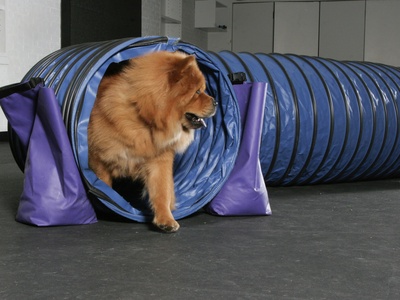
Chow Chow
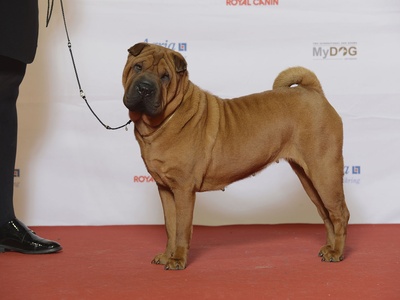
Chinese Shar-Pei
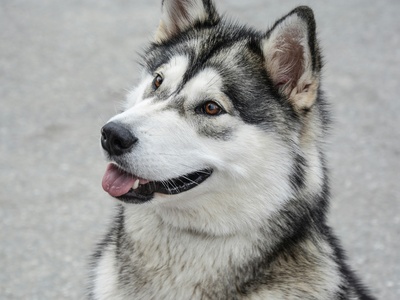
Alaskan Malamute
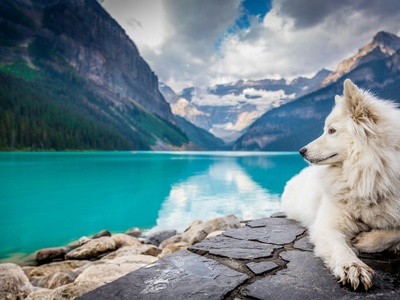
Samoyed
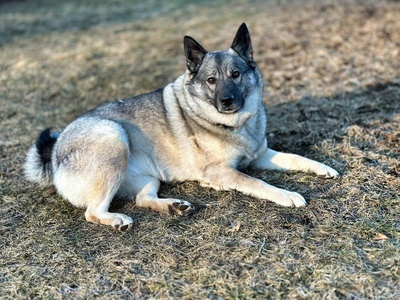
Norwegian Elkhound
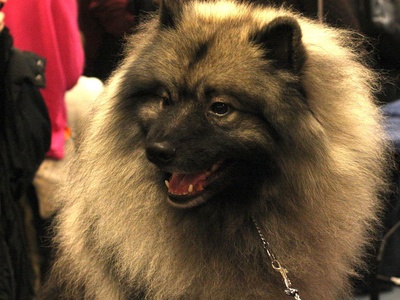
Keeshond
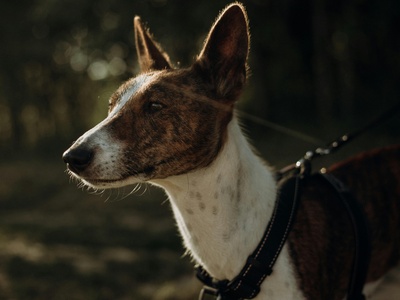
Basenji
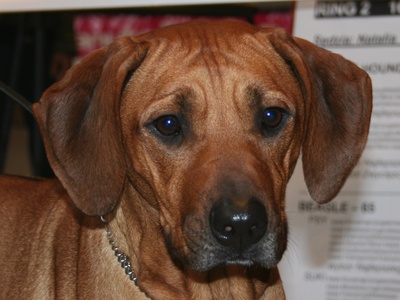
Rhodesian Ridgeback
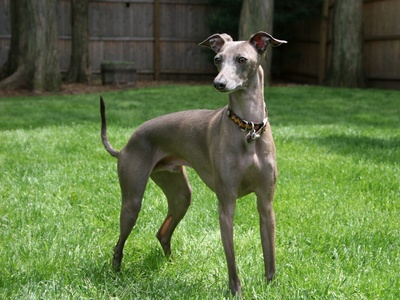
Greyhound
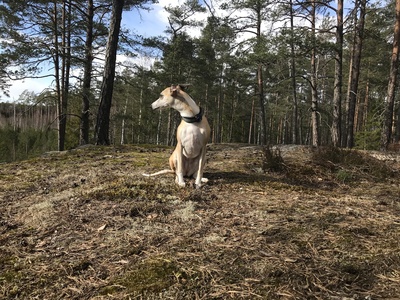
Whippet
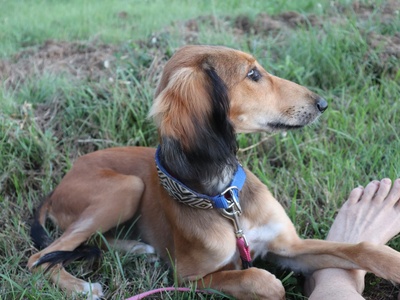
Saluki
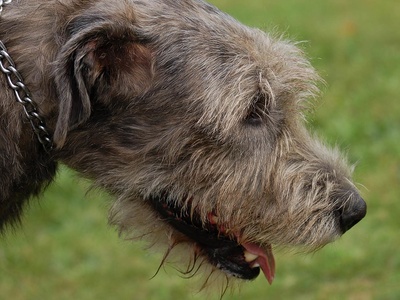
Irish Wolfhound
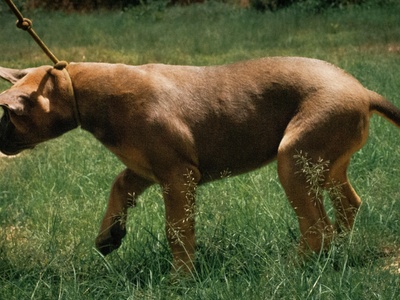
Scottish Deerhound
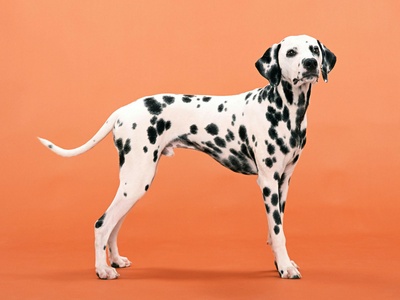
Dalmatian
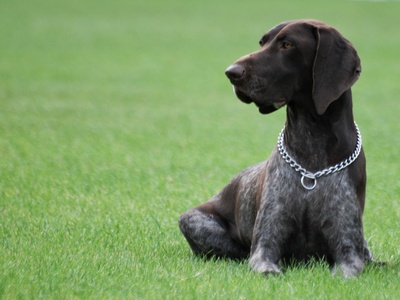
German Shorthaired Pointer
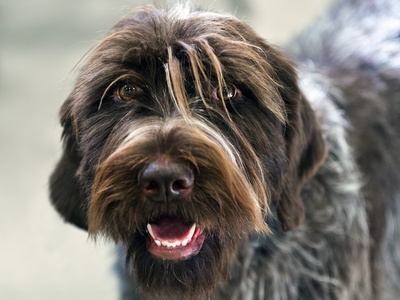
German Wirehaired Pointer
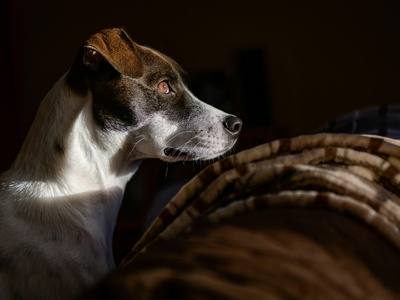
Pointer
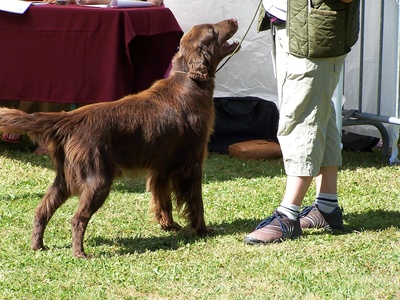
Flat-Coated Retriever
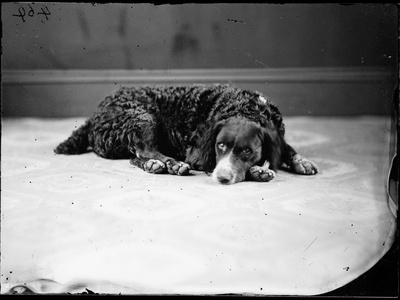
Curly-Coated Retriever
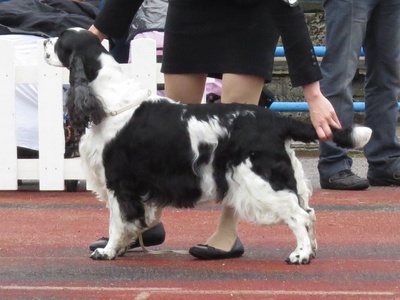
English Springer Spaniel
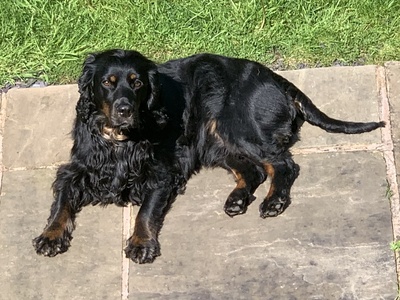
English Cocker Spaniel
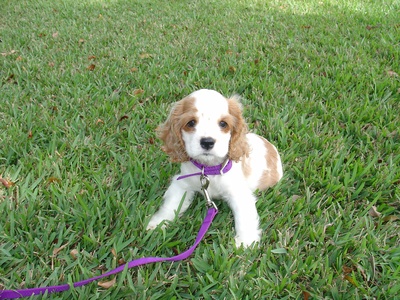
American Cocker Spaniel
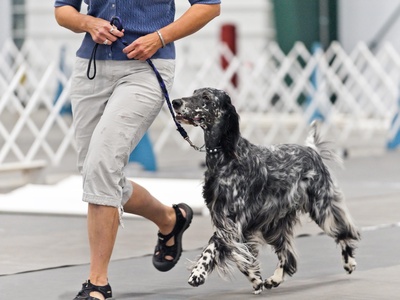
English Setter
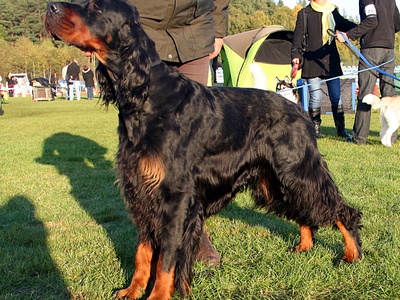
Gordon Setter
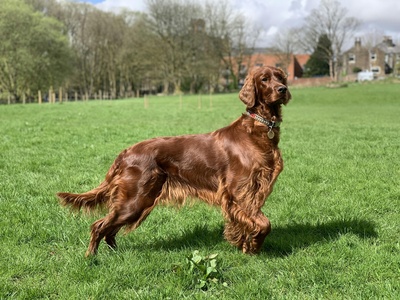
Irish Setter
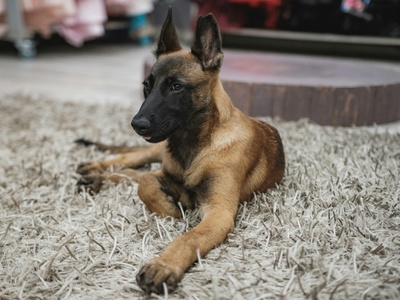
Belgian Malinois
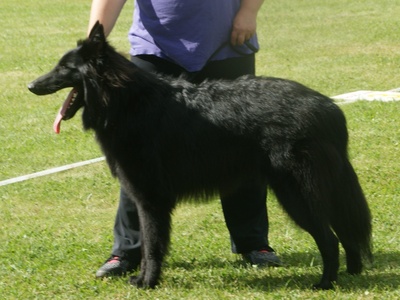
Belgian Sheepdog
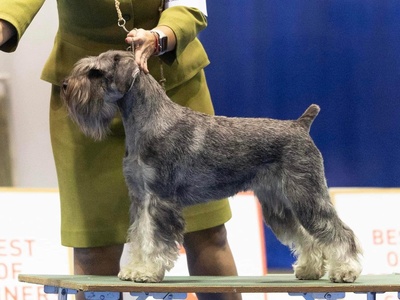
Standard Schnauzer
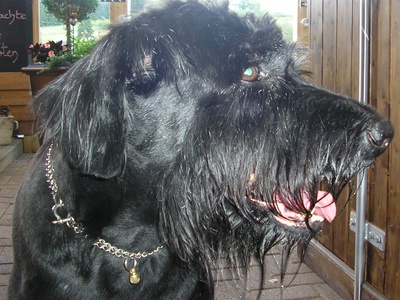
Giant Schnauzer

Miniature Schnauzer
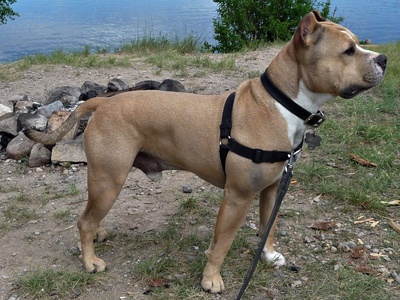
American Staffordshire Terrier
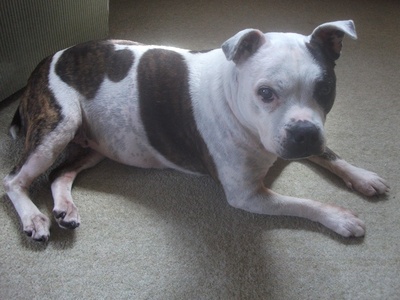
Staffordshire Bull Terrier
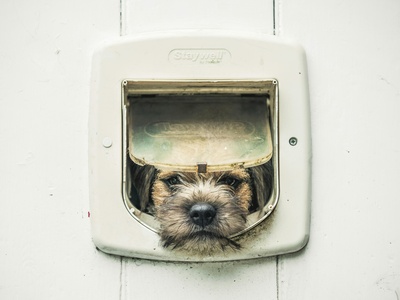
Border Terrier
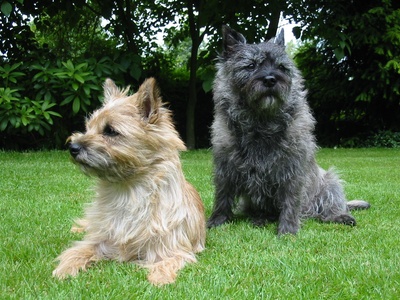
Cairn Terrier
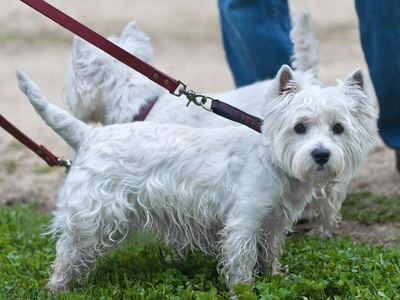
West Highland White Terrier
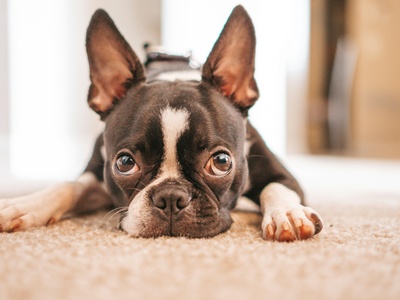
Boston Terrier
